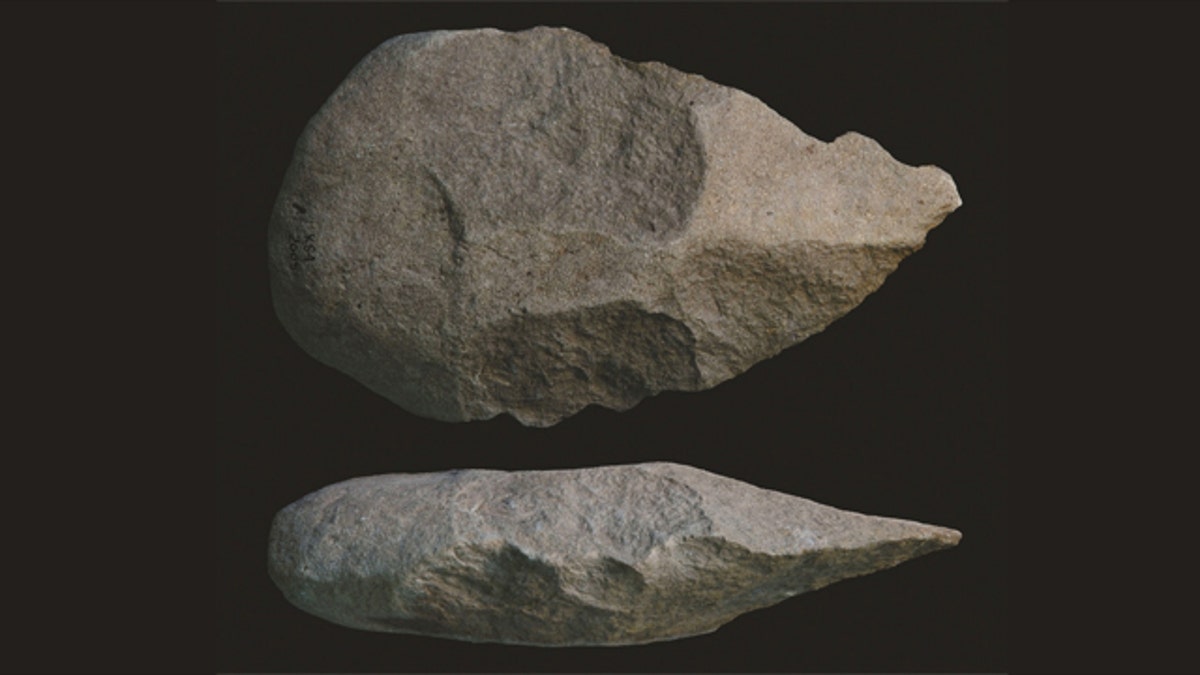
Examples of hand axes found in Kenya, which indicate that early humans were using stone hand axes as far back as 1.8 million years ago. (Pierre-Jean Texier, National Center of Scientific Research, France)
Our human ancestors may have been sophisticated tool users 1.76 million years ago.
Newly discovered hand axes from that period are the oldest examples of the complex Acheulean culture, 350,000 years older than the previous record holders. These ancient tools could affect what we know about humanity's departure from Africa. [See images of tools]
"Anthropologists consider the Acheulean hand axes to be the culture of our ancestor Homo erectus, and we know H. erectus first evolved around 1.8 or 2 million years ago," study researcher Christopher Lepre, of Columbia University, told LiveScience. "I think most researchers were anticipating that older stone axes would be found." And now they've found them.
Excavating erectus
Multiple examples of these Acheulean hand axes, which were made from chipped volcanic rock from a nearby stream, were found at a site on the shore of Lake Turkana in Kenya. The excavation team, led by Hélène Roche from the Université Paris in France, surveyed five sites in the area and found tools from an older culture of tool use, the Oldowan culture, in varying degrees of sophistication.
"There's not a tremendous amount of diligence that goes into making the Oldowan tools, you can say they are kind of haphazardly made," Lepre said. "It's pretty simple in terms of the makers were bashing stones together to make sharp edges."
The Oldowan tools that the researchers discovered were crude stone flakes, sharpened to the edge. The Archeulean hand axes, on the other hand, have a defined teardrop or oval shape to them. Lepre said this indicates that H. erectus had the ability to conceptualize the size and shape of the tool in their minds, and then reproduce it out of stone.
The ax blades were held in the hand (as opposed to wood-handled axes, a later invention) and were probably used to butcher zebras or giraffes, to smash open bones and scrape hides, or as digging tools to reach vegetables like potatoes.
Erectus in Europe
The data indicates that there were at least two tool-using hominids living in Africa 1.76 million years ago. Groups of H. erectus were probably using Acheulean technologies, while the more primitive Homo habilis may have been using the Oldowan tools.
What's still a mystery is how these tools left Africa. Acheulean culture and the tools that go with it don't arrive in Europe until about 1 million years ago. It is widely believed that H. erectus colonized Europe over 1.5 million years ago.
This could indicate one of two things: It's possible that the H. erectus groups that migrated to Europe hadn't developed Acheulean technologies yet, or H. erectus wasn't the species that developed the Acheulean tools. Other hominids living at the time, like H. habilis, could have developed the tools first before the culture eventually spread to H. erectus.
The study will appear in tomorrow's (Sept. 1) issue of the journal Nature.
Top 10 Missing Links
Top 10 Mysteries of the First Humans
Top 10 Things that Make Humans Special
Copyright © 2011 LiveScience.com. All Rights Reserved. This material may not be published, broadcast, rewritten or redistributed.
